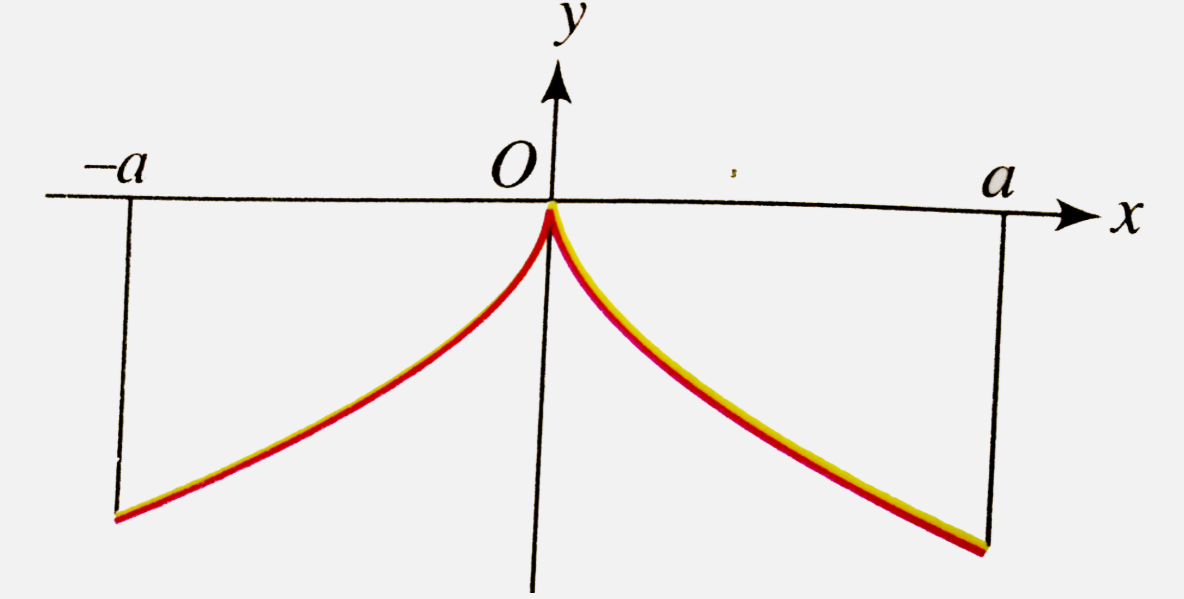If f(x)=x2+x+34 and g(x)=x2+ax+1 be two real functions, then the range of a for which g(f(x))=0 has no real solution is (−∞,−2) b. (−2,2) c. (−2,∞) d. (2,∞)Solution in Bengali
(−∞,−2)
(−2,2)
(−2,∞)
(2,∞)
The correct Answer is:C
f(x)=x2+x+34=(x+12)2+12≥12
g(f(x))=f(x)2+af(x)+1
for g(f(x))=0,
a=−(f(x)+1f(x))≤−2
∴ If a>−2,g(f(x))=0 has no solutions
Topper's Solved these Questions
- BOOK - CENGAGE PUBLICATIONCHAPTER - FUNCTIONSEXERCISE - Multiple Correct Answers Type9videos
FUNCTIONS
- BOOK - CENGAGE PUBLICATIONCHAPTER - FUNCTIONSEXERCISE - Comprehension Type7videos
FUNCTIONS
- BOOK - CENGAGE PUBLICATIONCHAPTER - EQUATION OF PLANE AND ITS APPLICATIONS -IIEXERCISE - DPP 3.48videos
EQUATION OF PLANE AND ITS APPLICATIONS -II
- BOOK - CENGAGE PUBLICATIONCHAPTER - GETTING STARTED WITH GRAPHSEXERCISE - Exercises 1.181videos
GETTING STARTED WITH GRAPHS
Similar Questions
If f(x)=3x2−x+1, then find f(−1)
07:01View SolutionLet f(x)=x2−2x−1∀x∈R.Letf:(−∞,a]→[b,∞), where a is the largest real number for which f(x) is bijective.
If f:R→R, then range of values of k for which equation f(|x|)=k has 4 distinct real roots is02:58View SolutionLet A(0,6,6), B(6,6,0) and C(6,0,6) are three points and point D is moving on the line x+z−3=0=y. If G is centroid of ΔABC, then minimum value of GD is
05:45View SolutionFollowing is the graph of y = f'(x) and f(0) = 0 .

(a) What type of function y = f'(x) is ? Odd or even?
(b) What type of function y = f(x) is ? Odd or even?
(c) What is the value of ∫a−af(x)dx?
(d) Has y = f(x) point of inflection?
(e) What is the nature of y = f(x)? Monotonic or non-monotonic?02:40View SolutionConsider the quadratic function f(x)=|m+1|x^2+(m+3)x+1,(m!=-1) then which of the following is/are true? a. f(x)=0 has no real roots for m in (-5-2sqrt3,-5+2sqrt3) b. f(x)=0 has no real roots for m in (-oo,-5-2sqrt3)(-5+2sqrt3,oo) c. Range of minimum value of f(x) is (-oo,-1] d. Range of minimum value of f(x) is (-oo,-3/4]
01:34View Solutionf ={(x,x^2/(x^2+1)): x in R} ,be a function R into R,range of 'f' 1)[0,1) 2) (-oo,oo) 3) (0,oo) 4) R^+
04:08View SolutionConsider the function y=f(x) satisfying the condition f(x+1x)=x2+1/x2(x≠0). Then the domain of f(x)isR domain of f(x)isR−(−2,2) range of f(x)is[−2,∞] range of f(x)is(2,∞)
04:04View SolutionFor x2−(a+3)|x|+4=0 to have real solutions, the range of a is (−∞,−7]∪[1,∞) b. (−3,∞) c. (−∞,−7) d. [1,∞)
03:48View SolutionLet f(x) be a function such that f(x)=(log)12[(log)3(sinx+a]. If f(x) is decreasing for all real values of x, then a∈(1,4) (b) a∈(4,∞) a∈(2,3) (d) a∈(2,∞)
04:20View SolutionLet f(x) be differentiable for real x such that f′(x)>0on(−∞,−4), f′(x)<0on(−4,6), f′(x)>0on(6,∞), If g(x)=f(10−2x), then the value of g′(2) is a. 1 b. 2 c. 0 d. 4
View SolutionIf f(x)=x2+x+34 and g(x)=x2+ax+1 be two real functions, then the range of a for which g(f(x))=0 has no real solution is (A) (−∞,−2) (B) (−2,2) (C) (−2,∞) (D) (2,∞)
02:47View SolutionThe range of f(x)=(x^(4))/(1+x^(8)) is (1)[0,oo)(2)[0,(1)/(2)](3)[0,1](4)(-oo,oo)
02:37View SolutionLet f:(0,∞)→(0,∞) be a derivable function and F(x) is the primitive of f(x) such that 2(F(x)−f(x))=f2(x) for any real positive x
02:28View SolutionLet f be a differentiable function with range (0,oo) and g(x)=(f(x))^2 -(f(x))^3 + (f(x))^4 , then
04:23View SolutionFor x2−(a+3)|x|+4=0 to have real solutions, the range of a is a. (−∞,−7]∪[1,∞) b. (−3,∞) c. (−∞,−7) d. [1,∞)
01:32View SolutionFor x2−(a+3)|x|=4=0 to have real solutions, the range of a is a(−∞,−7]∪[1,∞) b(−3,∞) c(−∞,−7] d[1,∞)
02:15View Solution
